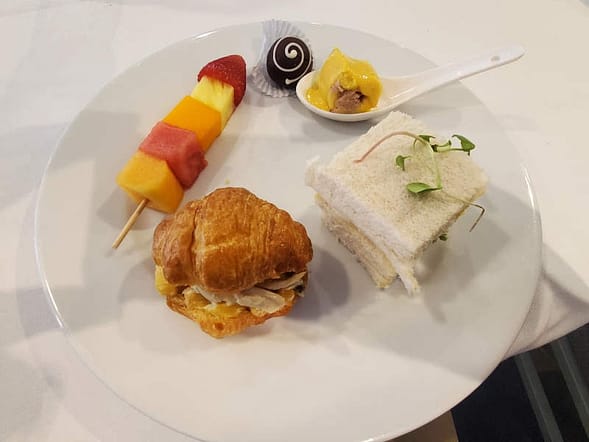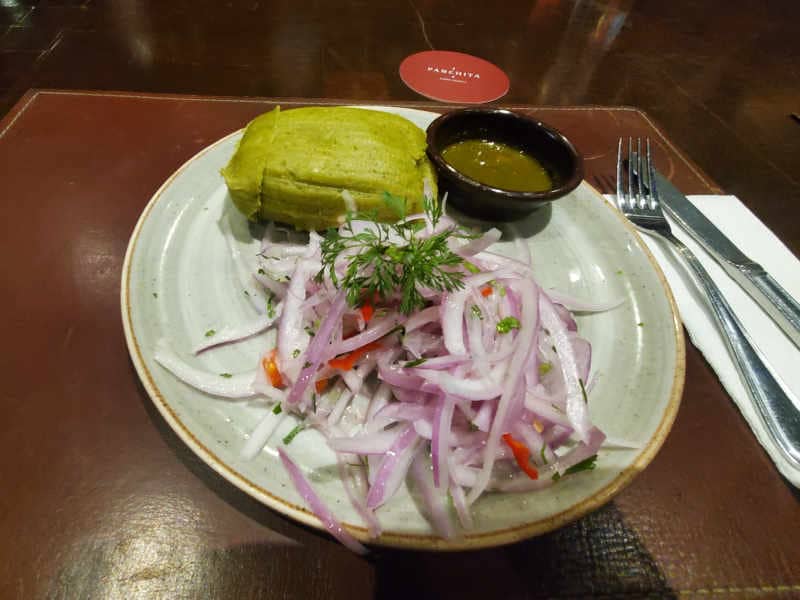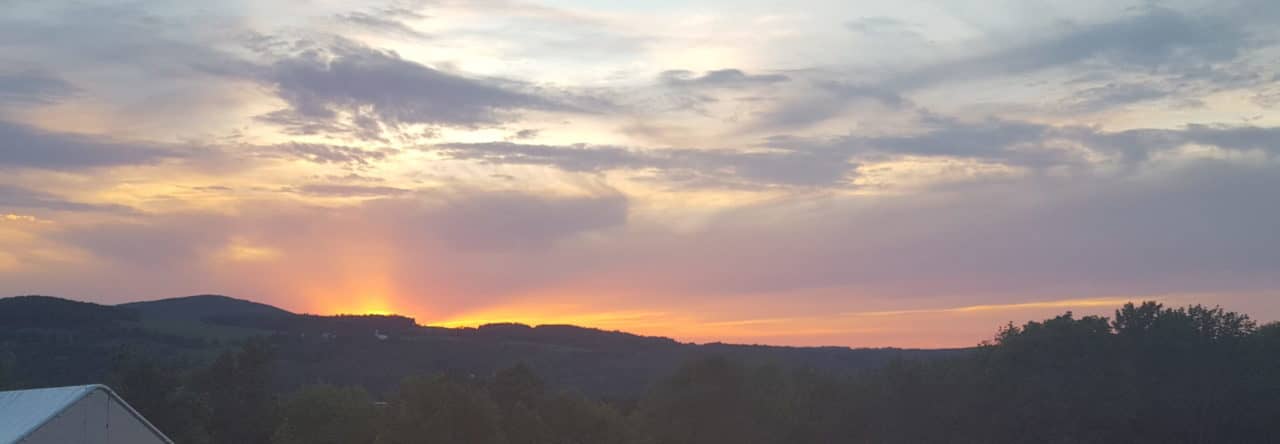I apologize for the delay in getting my posts completed. As you know I like to live life to the fullest and I am maximizing every free moment I have here in Peru. On the days we have planned events we are out early and get back late. During our limited free time I try to find other things to do. I’ll have a long post finished this evening.
Category: Peru Blog Page 4 of 5
All things related to my International Field Experience
On the second day I have already started to fall behind but there is a very good reason for that which you will have to wait to find out what that is! We started the day with a lesson on the Peruvian Education System. Like the previous day, we went through a tremendous amount of information in a short period of time. We did get to enjoy another delicious mid-morning snack. I want to make it clear that since I got here three days ago I have yet to be hungry once. So much food.

In Peru there are three levels to regular public education. Educación Inicial includes Pre-K (ages 0-2) and K (3-5). For Pre-K the hours are flexible and depend on the type of program. In kindergarten students are required to have five hours of instruction per day for a total of 25 hours per week and 900 hours per year. Educación primaria includes elementary students and they are required to have six hours of instruction per day for a total of 30 hours a week and at least 1100 hours a year. Educación secondaria includes the last five years of school and students receive seven hours of instruction per day, 35 hours a week, and at least 1200 hours a year. Courses include: math, communication, art, personal social development, physical education, religious education, science, and technology. In the table below you will see a breakdown of how students spend each week.
In many ways education in Peru is similar to that of the United States. Education is compulsory for all students ages 6 to 16/17. Students go to school most of the year but get some time off during their summer. Their school year runs from March to December. In 2010 they rolled out their new learning standards which contain seven cross-cutting concepts. These concepts are:
- Rights-based approach – promotes the recognition of rights and duties of the student and promotes other democratic values such as liberty, responsibility, and collaboration
- Inclusive and diversity aware approach – teaches students to value all people equally and to avoid discrimination, exclusion, and inequality of opportunities.
- Intercultural approach – promotes the interchange of ideas and experiences emerging from diverse cultural perspectives
- Gender equality approach: recognizes the need for equality of opportunity between males and females
- Environmental approach – seeks to educate students to take care of the environment
- Common good approach – promotes the development of socio-emotional skills such as empathy, solidarity, justice and equity
- Pursuit of excellence approach – incentivizes students to give their best effort to achieve their goals and contribute to their community
Peru is working towards improving their educational system and some issues and trends that are relevant to the present-day dialogue include expanding coverage in early childhood education, bilingual intercultural education, special basic education, high-performance schools, alternative basic education, evaluation/assessment, curriculum, and professional development related to instructional technology. One of the big questions we have had for educations in Peru is about special education in their schools. It has been difficult to get a straight answer and the answers we do get often try to deflect. From what we have gathered, students are not tested to determine if they have any learning needs and there really is not the support staff in schools to provide the accommodations these students would need.
Our lunch was absolutely amazing. Seriously. The food in Peru is delicious. If you like food, visit this country and prepare to never look at food the same way! After our appetizer and main dish we were very full and we thought we would not have to deal with dessert. Then on our way out we were handed take out bags each with a giant slice of flan. So much food.


After lunch we went to the US embassy in Peru. We were warned many times that photographing the embassy is a serious offense and could get us arrested and deported. This was so unfortunate because there were mountains behind the embassy and we couldn’t get any pictures of them! I tried to get some pictures from the bus but between glare and movement they didn’t turn out well. Pictures in Peru are tough to take because of the smog as well. There is a lot of moisture in the air due to the proximity to the ocean and there is fairly significant air pollution.

We had to go through two separate security checkpoints at the embassy. They took any electronics items we had and we could not even go to the restroom without an escort. While there we met with an official from the Public Affairs Office, a member of American Citizen Services, and several administrators from area schools. We were all given this earpiece which made us feel like secret agents. The earpiece was for listening to translations between Spanish and English. Any time someone spoke, the translator translated it into the opposite language. This was very impressive to see. The translator could listen to one language while translating to the other. The administrators spoke about education in Peru and we spoke about what we hoped to get out of the Fulbright program. The embassy prepared a table full of food for us but unfortunately there are no pictures. So much food.
The real excitement begins tomorrow.


After two years of waiting I am finally in Peru for my International Field Experience! As I mentioned previously, I will not be spending my time in one school working with a teacher and a class but I’ll be doing a series of day trips. This also means that we will all be able to stay together for the duration of our field experience so I don’t mind too much. There are two themes for the day: learning about Peru and food.

Introduction to Peru: History and Culture
Our crash course on Peru brought us through its history from the subjugation of the Incas by the Spanish to modern day in about 90 minutes. Here is a brief summary of some the information that was discussed:
- Peru’s capital, Lima, was founded by Francisco Pizarro in 1535 after the Incas were defeated.
- There was an indigenous uprising in 1780 which was led by Túpac Amaru II.
- Peru proclaimed its independence on July 28th, 1821.
- On October 3rd, 1968 the military forced the resignation of the president.
- Constitutional rule was reestablished in 1979 when Peru signed a new constitution.
- There are three regions: the arid coast, the mountainous Andean region, and the Amazonian jungle.
- There was a mass migration to the cities in the 20th century.
- There is a sizable Japanese-Peruvian and Chinese-Peruvian population.
- In recent times the government has invested heavily in health and welfare infrastructure.
- Agriculture, fishing, and forestry drive their economy
- Peru is a very mineral rich country: gold, silver, copper, iron, lead, zinc, bismuth, phosphate, and manganese. The minerals in the ground belong to the state though which causes a lot of backlash.
- There is a mixture of pre-Hispanic and mestizo lore abound in myths, songs, dances, and superstitions.

An Introduction to Peruvian Social Reality

During this presentation we learned about the social concerns that are relevant in Peru. While Peru celebrates its diversity, discrimination is still prevalent within its society. Like so many other societies, privilege tends to depend upon ones “whiteness”. People will attempt to hide their cultural backgrounds in order to fit in. There is so much to unpack here I will not be attempting to get into it much further at this time. It does show the importance of global education and opening the mind of our students though.
The Food
I know this is what you have all been waiting for. Like always, I started the day with breakfast. Then during our morning session we were provided a plate of food around 11am and I figured that lunch was early. Then at noon we went to the real lunch. Lunch started out with some tortilla chips and then we were given this dish with pork and pears. I thought that was a very good lunch. Then out came a plate with chicken and some potato/cheese casserole. For dinner there were several courses at this beautiful museum. There was also a plate of pastries dropped off in our rooms during the day. The best/worst part of this is that everything was so delicious! So much for getting in shape for our October relay…


Good news! My International Field Experience is on for Summer (or Winter) 2022. The trip has been shortened and we will not get to work in a school like originally planned but it is going to be such an amazing opportunity to network with educators and administrators in Peru. Perhaps once travel restrictions are not necessary anymore I can schedule something on my own. There are some absolutely incredible adventures in the pipeline so stay tuned!
As of right now my guiding question for my Field Experience is, “What impacts will climate change have on the daily lives of Peruvians?” In my Earth Science course we discuss the impacts climate change will have for us and I get to hear the concerns my students have for their future. If we, as a society, are going to solve the major problems facing humankind we need to work together. We need all perspectives. What may work for us in rural New York might not work in California, or Vanuatu, or Peru. We need all stakeholders to come to the table. This isn’t a first world problem. I’m hoping that I can use this guiding question to build some partnerships where my students can work with students in Peru on solving problems that are common to both our communities.
On June 15th I was supposed to leave for Peru on a trip funded by the U.S. State Department. While there I would be partnered up with a Peruvian teacher and spend time in their school and community. I would be immersed in the culture, I would build partnerships, and I would co-teach lessons with my partner teacher. The connection that I was to build would server as a foundation for infusing global learning into my curriculum.

Then 2020 happened. The spread of SARS-CoV-2 first hit China and Europe before making its way to North America. It spread quickly and soon many cities in the Northeast were facing skyrocketing cases. For a couple months numbers in South America were fairly low. Peru did everything right. They were one the first countries to shut their borders, they enacted curfews, and issued a stay at home order. Peru, as a nation, did everything they could to prepare and try to reduce the impact of the pandemic. One of their neighboring countries had the opposite response and ignored the issue. Their president even commented on how he believes they are naturally immune to the virus. This is the only South American country to have more confirmed cases. It makes sense why a country (or some states in the US) that doesn’t do anything sees higher numbers but why does a country that worked so hard to keep it under control have so many confirmed cases?
Unfortunately poverty plays a role in the spreading of illnesses such as this. Peru has had one of the fastest growing economies in the region and they have been working on improving infrastructure but they still have a long ways to go. This article helps to explain why the virus hit Peru so hard.
Coronavirus – What’s Happening in Peru?
Early on in the pandemic you could read in the news how countries (like the US, Russia, China) were sharing equipment like ventilators but I wonder if the countries in South America and Africa are receiving the same assistance? It was horrific to read about what they have been going through in Peru. Things are slowly improving but here is a look at what things were like at one point.
Peruvians cry out for oxygen as coronavirus takes its toll
It shouldn’t take a pandemic for the world to see why it needs to work together. Hopefully things start to improve in Peru and their populace are able to stay healthy. Peruvians are strong, beautiful people and I hope someday I do get to visit their country!
Associated UN Sustainable Development Goals
Goal #1: No Poverty
Goal #3: Good Health and Well-Being
